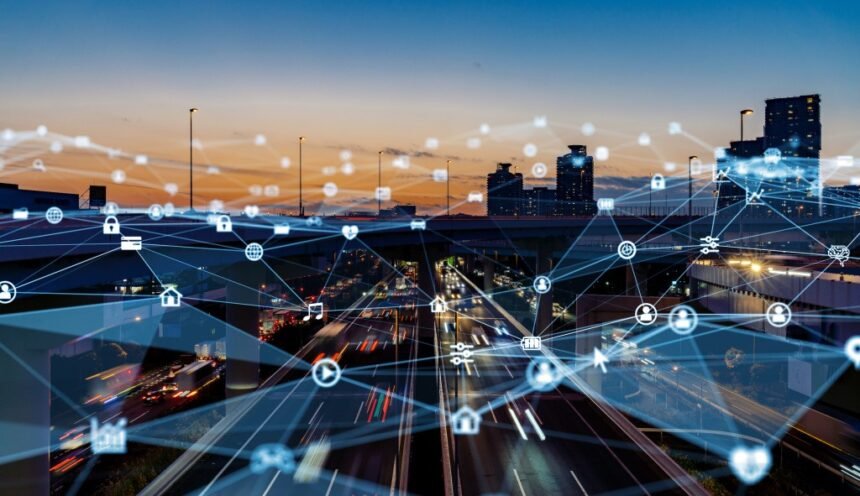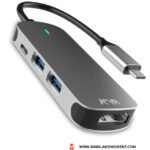What Are The Four Primary Systems of IoT Technology Great

Imagine your fridge texting you when it’s low on milk. Sounds wild, right? That’s the magic of IoT technology a network of smart devices chatting, sensing, and acting to make life smoother. From your thermostat tweaking itself to factories predicting machine breakdowns, the Internet of Things (IoT) is everywhere. By 2025, experts predict over 75 billion connected devices will be buzzing worldwide, according to Statista. But how does it all work?
At its heart, IoT technology relies on four primary systems: sensing and data collection, connectivity, data processing, and actuation and user interface. Together, they form a seamless loop that powers everything from home automation to industrial IoT. Ready to dive in? Let’s explore each system, unpack the tech behind it, and see why it’s a game-changer.
Sensing and Data Collection: The Eyes and Ears of IoT
A farmer in Iowa checks his phone and knows exactly when to water his crops. That’s IoT sensors at work, the unsung heroes of IoT technology. These tiny devices act like the eyes and ears, gathering real-world info—think temperature, motion, or even air quality.
How It Works
IoT sensors like temperature sensors or motion detectors constantly sniff out data. A smart thermostat, for instance, picks up a chilly room and sends that info along. Some use RFID tags to track inventory, while others, like environmental sensors, monitor pollution levels in cities. These gadgets are small but mighty, often sipping power from batteries or solar cells.
Key Technologies
- Biometric sensors: Scan fingerprints for security.
- Accelerometers: Detect movement in wearables.
- Monitoring devices: Track heart rates or soil moisture.
Real-World Impact
Take agriculture. Farmers use environmental sensors to measure soil humidity, slashing water waste by up to 30%, per a 2023 USDA report. In smart homes, motion detectors flip on lights when you walk in, saving energy. It’s practical stuff that adds up.
Challenges to Watch
Sensors need juice, and replacing batteries in a million devices isn’t fun. Accuracy matters too—faulty readings can mess up everything downstream. Plus, IoT security risks loom. Hackers could spoof sensor data, tricking systems into chaos.
Why It’s Vital
Without sensing, IoT’s blind and deaf. Data starts here, feeding the whole system. As Kevin Ashton, who coined “Internet of Things,” once said, “We need to empower computers with their own means of gathering information.” That’s sensing in a nutshell.
Connectivity: The Nervous System of IoT

Data’s collected. Now what? It’s gotta move. That’s where connectivity protocols step in—the nervous system of IoT technology. These are the highways and backroads that link smart devices to each other and the internet.
How It Works
Think of connectivity as a courier service. Protocols like Wi-Fi, Bluetooth, or 5G zip data from a sensor to a hub or cloud. A smartwatch uses Bluetooth to ping your phone, while a factory sensor might lean on LPWAN (Low Power Wide Area Network) to reach far-off servers. It’s all about speed and range.
Top Connectivity Options
Here’s a quick rundown:
- Wi-Fi: Fast, great for homes up to 1 Gbps speeds.
- Bluetooth: Short-range, low power perfect for wearables.
- Zigbee: Mesh networks for smart homes, hitting 250 kbps.
- 5G: Blazing fast (up to 10 Gbps) for industrial IoT.
- LoRaWAN: Long-range, low-power for rural setups.
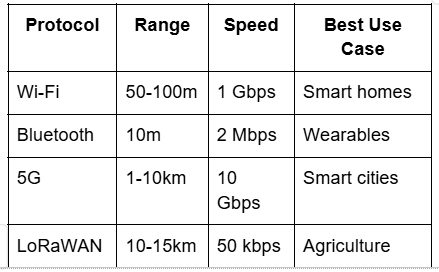
Real-World Example
In smart cities, traffic lights sync via 5G to ease congestion. A 2024 study from McKinsey found cities using IoT networking cut commute times by 15%. That’s connectivity, making life better.
Challenges
Interference can clog signals—think Wi-Fi in a crowded apartment. Range limits hit rural areas hardest. And IoT security? A weak link invites hackers. Encryption and authentication are must-haves to keep data safe.
Why It Matters
No connectivity, no conversation. Devices stay mute without this backbone. It’s the glue holding IoT solutions together, from your smart appliances to massive industrial automation setups.
Data Processing and Analytics: The Brain of IoT
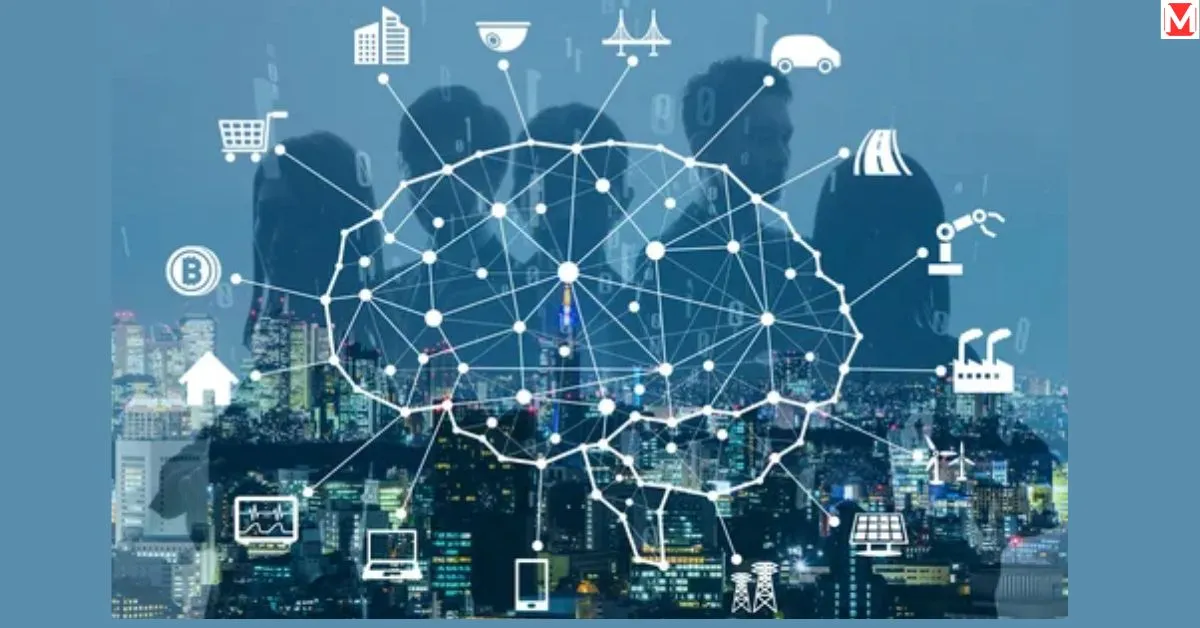
Data’s flowing now. But it’s just noise until you make sense of it. Enter data processing and analytics the brain of IoT technology. This system turns raw numbers into insights you can actually use.
How It Works
Processing happens in two flavors: edge computing and cloud computing. Edge crunches data on the device itself like a self-driving car slamming the brakes. Cloud computing sends it to remote servers for deeper analysis, say, spotting sales trends in a store.
Key Tools
- Machine learning in IoT: Predicts failures before they happen.
- Big data: Sifts through mountains of info.
- Real-time analytics: Delivers instant decisions.
Edge vs. Cloud: A Quick Comparison
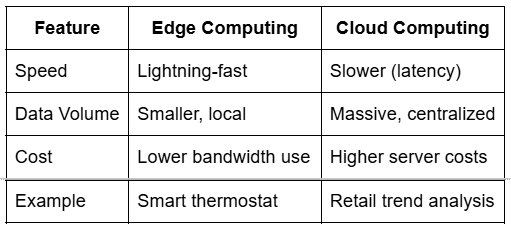
Case Study: Predictive Maintenance
In industrial IoT, factories use edge computing to monitor machines. General Electric’s Predix platform analyzes sensor data in real time. Result? Downtime dropped by 20%, saving millions, per a 2023 GE report. That’s intelligent automation at its finest.
Challenges
Overloaded servers can choke cloud platforms. Slow processing delays critical actions—like a medical device lagging. And data efficiency? Too much junk data wastes resources. Machine learning in IoT helps filter the noise.
Why It’s Crucial
Raw data’s useless without a brain to decode it. Processing powers predictive analytics, turning IoT gadgets into proactive helpers. It’s where digital transformation really shines.
Actuation and User Interface: The Hands and Voice of IoT
Insights are ready. Time to act. Actuation and user interface are the hands and voice of IoT technology turning data into motion and letting you take charge.
How It Works
Actuation in IoT uses IoT actuators think motors or valves to trigger physical actions. Your smart lock clicks open when your phone’s near. Meanwhile, user interface (UI) like dashboards or mobile applications shows you what’s happening. Say “Alexa, dim the lights,” and it’s done.
Key Components
- IoT actuators: Motors in robotic arms or valves in irrigation.
- UI design: Apps, voice assistants, or touchscreens.
- Smart controls: Adjust settings remotely.
Real-World Win
Hospitals lean on adaptive systems. A 2024 study from Johns Hopkins showed IoT ventilators tweaking oxygen levels automatically cut patient recovery time by 12%. That’s actuation saving lives. On the UI side, nurses check vitals via sleek dashboards.
Challenges
Laggy actuators can stall like a smart door that won’t unlock. Clunky UX frustrates users; nobody wants a confusing app. And IoT security risks? Unprotected interfaces are hacker bait. Threat detection and data encryption are non-negotiable.
Why It’s Essential
IoT isn’t just smart it has to do something. Actuation brings the action; UI keeps you in the loop. Together, they make connected electronics practical, not just flashy.
“IoT is about making the invisible visible and actionable,” says tech analyst Jane Smith. Spot on—actuation and UI bridge that gap.
Final Words
Sensing collects the raw intel, connectivity sends it zipping along, data processing thinks it through, and actuation acts on it. These four systems don’t just coexist—they amplify each other, driving IoT technology forward.
From smart manufacturing to home automation, the impact’s massive. A 2025 Gartner report pegs IoT’s economic value at $4 trillion annually. That’s no small potatoes! Want to see it in your life? Grab a smart bulb and watch the magic unfold.

